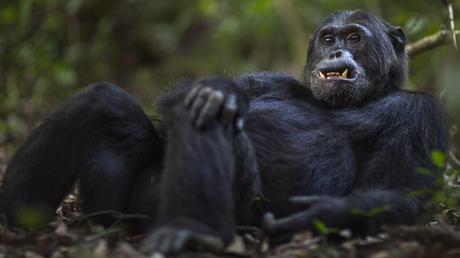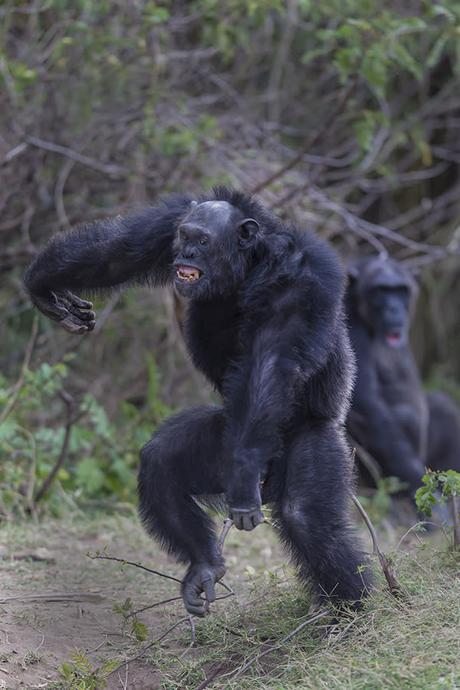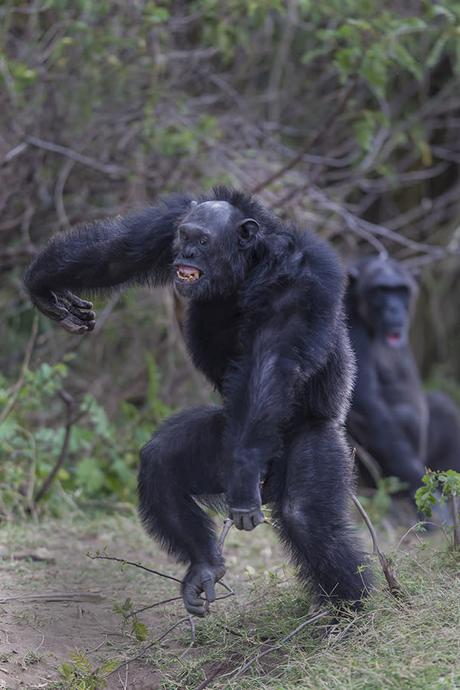
Nestled deep in the wilderness of the Congo Basin, lies the Bondo monkey stands at the crossroads of legend and scientific reality. Once seen only in fleeting glimpses, this creature has become the focus of intense curiosity and rigorous investigation.
A dedicated team of primatologists and scientists led the search into the unknown and embarked on a journey to track down this elusive primate. Their search, based on the meticulous application of scientific methods, aimed to unravel the truth behind the mysterious monkey and bridge the gap between folklore and verifiable facts.
Now let's get to the bottom of the Bondo monkey saga.
The 'mythical' Bondo monkey
Often described as a large, bipedal primate, the Bondo monkey, also known as the Bili monkey, is said to resemble a cross between a gorilla and a human. This has led to speculation about its connections to cryptids such as Bigfoot or the Yeti.
The term "Bondo" refers to a region in the Democratic Republic of Congo where many sightings have been reported. "Bili" refers to a specific area within the Bondo region known for its dense, unexplored forests.


Bili monkeys have developed a formidable reputation as "lion killers," a title that has added to their mystique. This reputation stems largely from local folklore and anecdotal reports suggesting that these monkeys had the strength and ferocity to confront and kill lions.
Such accounts have portrayed the Bili monkeys as exceptionally formidable and aggressive compared to their primate cousins, contributing to their lore.
However, scientific research and observations, such as those conducted by Hicks and Williams, have provided a more nuanced understanding of these monkeys. Although they exhibit unique behavior not often observed in other chimpanzee groups, no concrete evidence supports these sensational claims.
Rumors about these giant apes have been part of local folklore in the Congo Basin for centuries and have been passed down through generations of indigenous tribes and local communities.
The story continues
Interest from the Western world increased in the late 20th and early 21st centuries as explorers and cryptozoologists became intrigued by the possibility of a new primate species.
First scientific reports
In 1996, Karl Ammann, a Swiss photographer and conservationist, became intrigued by the possibility of discovering a new species of monkey after coming across unique skulls in a Belgian museum.
This led him to the remote north of Congo, where he heard stories about the Bondo monkey from local hunters. They talked about 'tree knockers' and 'lion killers' - formidable monkeys known for their strength and immunity to poisoned arrows.
Shortly afterwards, he found a special skull that combined features of both chimpanzees and gorillas. In addition, Ammann encountered exceptionally large feces and footprints that rivaled or even exceeded those of gorillas in size, adding to the mystery surrounding these apes.
His decade-long exploration, marked by significant logistical efforts such as the construction of airstrips, attracted conservationists and researchers, including a notable primatologist who would get to the bottom of the mystery.
Looking for mysterious monkeys in the Bili Forest
Shelly Williams, an independent primatologist, played a pioneering role in studying the Bili monkeys during her explorations in the summers of 2002 and 2003. At Ammann's invitation, Williams met and documented several groups of chimpanzees, including those she identified as the "mysterious monkey'. "
"The unique characteristics they exhibit simply don't fit in with other groups of great apes," Williams told Time in 2005. "At the very least, we have a unique, isolated chimpanzee culture that is unlike any culture ever studied."
These monkeys were notable for their specific physical and behavioral characteristics that differed from known monkey species: characteristics such as a flatter face, a straight forehead similar to that of gorillas, early graying, the absence of typical genital swelling in females, and unique nesting capabilities. behavior, with some monkeys nesting on the ground and others in low-hanging branches.
Their vocalizations, especially the louder howls that coincided with the full moon, led Williams to hypothesize the potential discovery of a new species, subspecies or even a chimpanzee-gorilla hybrid.
Hicks joins the search
Ph.D. student Cleve Hicks provided additional insights into these enigmatic monkeys.
While Williams proposed groundbreaking theories on the classification of the apes, Hicks focused on their behavioral patterns, noting the construction of ground nests and the use of unusually long tools for ant fishing, a behavior in which chimpanzees use sticks to retrieve ants from their nests . their tool-using skills and cognitive skills.
This marked a significant cultural departure from the known behavior of chimpanzees. His observations suggested that these monkeys may not genetically represent a new subspecies, but their unique behavior could represent an evolutionary departure from established chimpanzee norms.
Ammann, meanwhile, was concerned that sensational claims could undermine the credibility of their work, and emphasized the need for robust scientific evidence over anecdotal accounts.
Despite facing skepticism and challenges, both Williams and Hicks remained committed to their research. These findings generated a lot of interest and led to further research.
So is the Bili Monkey just a myth?
After decades of research and speculation surrounding the enigmatic apes of the DRC, a major breakthrough was made in the early 2000s when it was confirmed that these mysterious primates were part of the common chimpanzee species, Pan troglodytes.
The culmination of this long-term research, initially fueled by Williams' observations and Ammann's findings, significantly benefited Hicks and his team. They used motion-detecting cameras to capture clear images of the monkeys, whose unique behavior and physical traits had puzzled scientists.
DNA analysis of collected samples finally solved the mystery and confirmed that the Bili monkeys are common chimpanzees with distinct behavioral and ecological adaptations. This discovery highlighted the remarkable diversity within primate species and the influence of environment and culture in shaping their societies.
During twelve years of documenting these chimpanzees in the Bili-Uéré region, Hicks and his team have discovered a host of behaviors unique to this population, including the use of specialized tools for harvesting insects and honey and the unusual practice of building ground nests.
These insights into their complex culture reflect the early stages of human technological evolution and advance our understanding of ecological adaptations.
Commonalities with other chimpanzee populations
Bili monkeys, despite their unique characteristics and behaviors observed in the remote forests of the DRC, share several similarities with other chimpanzee populations:
Genetic makeup: Bilimon monkeys are a subgroup of the eastern chimpanzee ( Pan troglodytes schweinfurthii), which share a significant portion of their genetic makeup with other African chimpanzee populations.
Original article: Is the Bondo monkey a cryptid or a specially adapted chimpanzee?
Copyright © 2024 HowStuffWorks, a division of InfoSpace Holdings, LLC, a System1 company